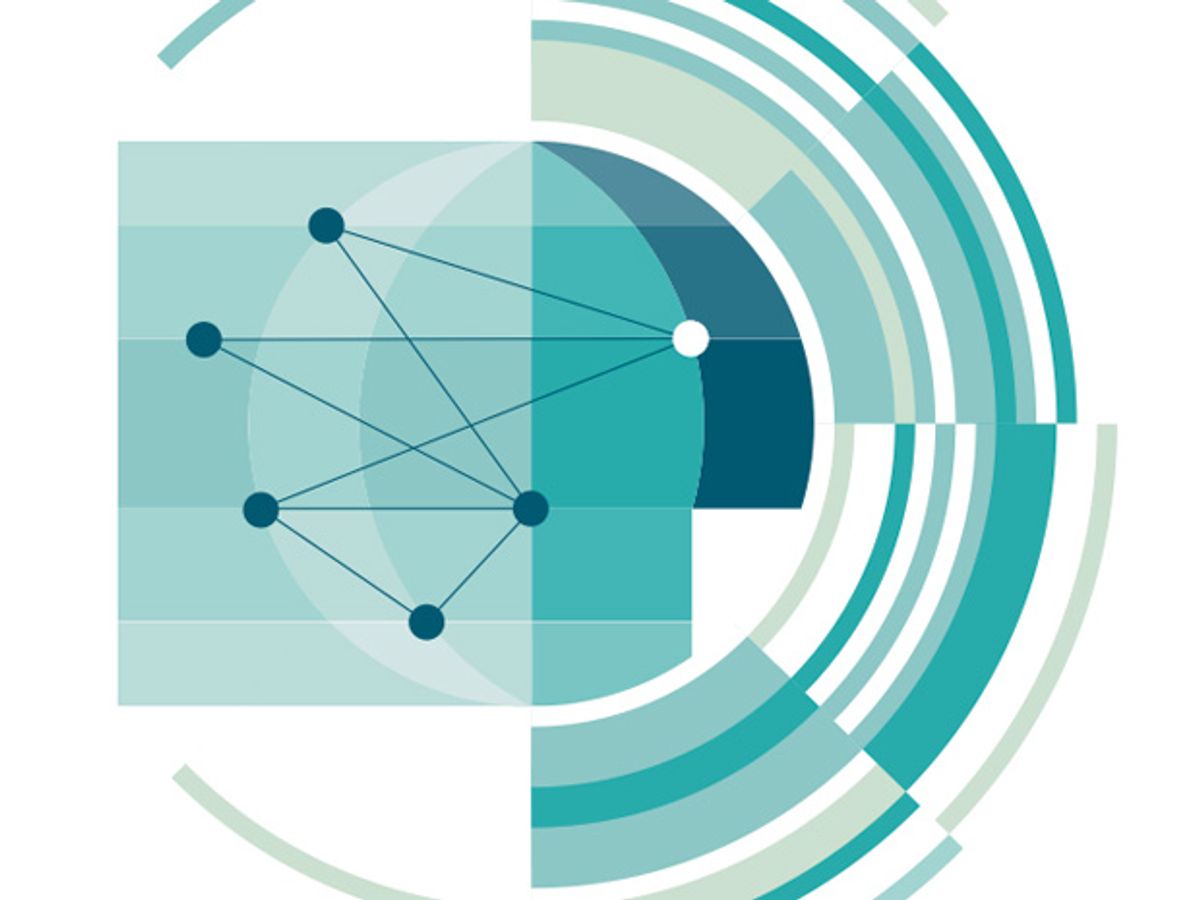5 Technologies That Will Shape the Web
Innovations that will make the web smarter and sleeker and irresistibly more social, too

This is part of IEEE Spectrum's special report on the battle for the future of the social Web.
It was 1997—eons ago, in Internet years—and the Web was only beginning to take off. People used dial-up modems to get online, and Netscape Navigator was the browser of choice. Google was still a research project of two Stanford students, and Facebook…well, Mark Zuckerberg was a 13-year-old having his Star Wars–themed bar mitzvah.
So where will the Web go next? We asked two dozen analysts, engineers, and executives to describe what technologies they think will shape our online experiences in the next several years. Their predictions could easily fill this entire issue, but we distilled their wisdom into a more palatable list of five key technologies that our sources mentioned most frequently.
We also asked six of the experts to tell us what these technologies mean for today's dueling titans, Google and Facebook. What challenges do they face? Who's got an advantage? You'll find their comments sprinkled throughout these pages.
Lists like this are nothing if not contentious. Some critics will say we overlooked more crucial trends. Others will claim our technologies are already history. So we want to know what you think. Join the discussion in the comment section below.
1. The Mobile Web Will Be a Smarter Web
When we talk about mobile as a disruptive technology, we need to talk about social. Google is winning the Web, but Facebook is winning social. I see Google really flailing around social. They are trying to figure it out, but they are coming late to the game.
—Gina Trapani, Developer, ThinkUp, smarterware.org
Today a fierce battle is under way between Google's Android and Apple's iPhone. But let's put that aside and focus on how mobile technology is transforming the user experience. For many people mobile devices are becoming the favored portal to their online social lives. We're using our phones to voice opinions, publish photos, play games, and check on friends. More than 250 million users access Facebook on their mobile devices, and 40 percent of all tweets come from mobile platforms. Already the iPhone 4 is poised to become the most popular camera among Flickr users.
Experts say this is just for starters. The powerful blend of mobile and social capabilities will inspire new products and services and become the foundation for new ways to work, shop, and entertain ourselves. The key element propelling this transformation? Context.
Mobile phones mean that people want information in context. So Google's challenge is to give people personalized recommendations on the fly, which is different from a list of search results. Facebook is well placed in this regard, because they have the social context for search on mobile phones.
—Richard MacManus, Blogger, ReadWriteWeb, readwriteweb.com
Most of the time when you use your phone, you're immersed in a specific context: There's the location, the day and time, what you're doing there, what is nearby, whether you've been there before. There's also your social graph—the connections among individuals, as well as among individuals and objects—with bits of data that are relevant to that context (whether, say, any friends have shared information about that location). The future of mobile computing will be all about how big companies and start-ups alike develop technologies—data analytics and machine learning algorithms, for example—capable of making sense of context data to provide better search results, advertising, and other services.
To see where this is going, consider one piece of context information that companies are already exploring: geolocation. Facebook launched a service called Places, and Google has Latitude; location start-ups include Foursquare and Gowalla. Using GPS and Wi-Fi data from people's phones, these services offer location-specific information and deals. If you're at a store, you might receive a discount coupon; if you're at a bar, you'll see what friends have said about the place and whether any of them are nearby. So what our mobile devices are doing is linking the digital world to the real world—and as a result, new applications will become possible and people will become ever more connected to other people.
“You're going to see the same kind of changes to industry and business that you saw when the Web became popular,” says Dennis Woodside, a Google vice president, “but it's going to happen much faster.”
2. Video Is Poised to Inundate the Web
Each month, YouTube users all over the world collectively spend some 2.9 billion hours—that's 331 050 years, if you're wondering—on the site. More video is uploaded to YouTube in 60 days than the three major U.S. networks created in 60 years.
We have an increasing expectation that we should be able to watch movies and entertainment whenever we want to. Why do I have to watch “American Idol” at night on a certain channel? Why can't I just pull it up on my iPad and watch it when I want to watch it?
—Robert Scoble, Blogger, Scobleizer, scobleizer.com
Analysts say that YouTube, acquired by Google in 2006, is just the beginning trickle of a video flood that will swamp the Web. Indeed, video traffic has already surpassed peer-to-peer as the dominant form of data flowing in telecommunications pipes. Movies streamed by Netflix alone can make up as much as 20 percent of U.S. broadband traffic on any given night. As more TV programming shifts to the Web, TV sets themselves are becoming Net-enabled devices optimized for video consumption. Smartphones that make it easier to produce, watch, and share video only help to accelerate this trend.
But the future of Web video is not only that there will be more of it—how we watch it is also changing. That's because the Web is enhancing the social nature of video. We love to talk about what we watch—some people now tweet in front of the TV during shows and sports—and we love to recommend things to one another.
Google has more to be worried about with video than Facebook does in the sense it has more to lose. YouTube is a hugely popular video-sharing site, but it faces some threats. For example, it needs to make the transition to professional content, and that transition has been hard.
—Danny Sullivan, Blogger, Search Engine Land, searchengineland.com
And here's where the social Web comes in. The social graph could be the basis of a powerful recommendation engine. Indeed, Facebook recently teamed up with Warner Bros. to offer streaming movies for rent, starting with The Dark Knight in March. Facebook's move into distribution is a big threat to cable companies' pay-per-view services; to YouTube, which has long sought more professional content; and even more so to Netflix, now the dominant force in online movie rentals. Facebook's advantage is its massive user base and the fact that it can use people's social connections, their comments, and “likes” to suggest movies in a very effective way.
Because online video's attractiveness to users makes its revenue potential gigantic, companies are reorganizing their software and network infrastructures to accommodate it. That focus has touched off a major battle over standards. More and more Web video is relying on a patent-encumbered encoding technology known as H.264. Google, which says it favors an open, free-for-all video format, has dropped support for H.264 and is pushing instead for an alternative called WebM.
A resolution should emerge when a new Web standard, HTML5, becomes official. HTML5 will specify which video formats—contenders include H.264, WebM, and others—all browsers should support. David Recordon, senior open programs manager at Facebook, says that no matter which format prevails, it will lead to richer applications both on the Web and on mobile devices, making it easier for ever more people to create and consume video.
3. Everyday Objects Will Join Our Social Networks
Welcome to the Internet of Things, where data from scientific instruments, embedded sensors, and a vast assortment of Net-connected objects will eventually eclipse information produced by humans.
Many of these connected devices will use Android, so Google will benefit from the trend, though it has to figure out how to integrate their data in their search index. Facebook isn't there yet, because what is missing is the social layer in those devices. But Facebook is so big—they will figure something out.
—Jeff Clavier, Investor, SoftTech VC, softtechvc.com
Actually, it's already happening. Carnegie Mellon University researchers are developing sensors to monitor buildings, roads, and bridges. A high-tech pedometer made by Fitbit monitors your movements and lets you share your exercise habits with your friends. Last year, toy maker Mattel unveiled an electronic tag that sends a tweet whenever a dog moves or barks.
First proposed more than a decade ago, the Internet of Things is finally taking shape, thanks to ever cheaper electronics, improvements in wireless technologies, and the availability of DIY electronics like the Arduino, a popular open-source microcontroller.
Mapping data from ubiquitous sensors to our social graphs will provide valuable information about ourselves and our surroundings. People will find ways to use these streams of information to their advantage, in ways that we can't necessarily anticipate now but that will surely test our boundaries for privacy and publicness. Don't be surprised when your fridge joins Facebook.
Sensors will pump a ton of new data into the Internet. What's most fascinating is what will be built on top of that new data, which makes it likely to produce deeply disruptive new start-ups and companies. The next Google or Facebook may well be an Internet of Things company.
—Richard MacManus, Blogger, ReadWriteWeb, readwriteweb.com
4. Web Data Will Explode, and That's a Good Thing
This unprecedented data accumulation has led to a tech arms race of sorts, with companies seeking new ways of storing, managing, and analyzing information. The industry has dubbed this trend “big data.”
Google, of course, was a pioneer in the development of data-crunching technologies. It created tools such as MapReduce, a set of superefficient algorithms for distributing and processing large blocks of data, and built supersecret data centers that work like “warehouse-sized computers,”; as some Google researchers have described them.
Facebook is trying to be hegemonic when it comes to your profile. Facebook Connect is brilliant because of that. They couldn't be the one place where everyone went on the Web, but they could be the profile that everyone links to.
—Charlene Li, Analyst, Altimeter Group, altimetergroup.com
This computing capability is at the heart of what makes Google's search offerings so powerful. It also lets the company discover insights about what people are collectively thinking, the seasonality of the flu, and the popularity of words. Peter Norvig, Google's director of research, says that having more data opens the door to new kinds of theories and models—new ways of thinking about the world.
But today's big data will be different from tomorrow's. A large fraction of today's data consists of Web pages that companies like Google can crawl, process, and present to users when needed. In the future, however, users will consume and produce ever more data in near real time.
Google has so much data that they have been sucking up from the Web for so long, but Facebook has structured data that is people-centric. That is really powerful, especially with mobile happening and people wanting to find other people, versus Web pages. Facebook's big data is a lot more interesting than Google's.
—Gina Trapani, Developer, ThinkUp, smarterware.org
The new data will come in great part from the social Web. Already, Facebook users share more than 30 billion pieces of content—Web links, news stories, blog posts, photos—each month. Twitter users generate more than 155 million tweets per day (up from 55 million one year ago). What's more, both companies are establishing themselves as platforms for data aggregation, granting other companies access to the results through APIs, or application programming interfaces. (Facebook Connect, which allows sites to access public data from Facebook users, is one such API.) The growth of these interconnections, of course, spawns still more online data, in a widening spiral.
It's a spiral that is leaving Google, perhaps more than anyone else, dizzy: Real-time and social search poses the greatest threat to the company's search hegemony. As Facebook, Twitter, and other social-oriented sites amass vast volumes of data and connect this data to people's social graphs, they might be able to help users find information in ways that Google can't.
As this battle unfolds, tech companies, including innovative start-ups like Cloudera, race to build better big-data technologies: radically new server architectures, database systems very different from classic relational schemes, novel language frameworks that combine the best aspects of various programming languages. They're also mobilizing highly specialized teams of “data scientists.” Interestingly, although the companies are secretive about their tech arsenals, they rely a great deal on open-source code, sometimes even collaborating on open-source projects that all can use. Experts say that innovations in big data will lead not only to better online experiences but also to new data-driven services and even scientific discoveries.
5. Voice and Gestures Will Change Human-Computer Interaction
Now human-computer interaction is really evolving. Smartphones and tablets have popularized touch screens, doing away with physical keyboards and creating an interface that even toddlers can intuitively operate. Next is voice. Google has already voice-enabled its search app for Android: Speak and the program will search. Another app will translate sentences between Spanish and English in near real time.
Some disruptions are difficult because they require large investments. Natural interfaces are really hard; they require a huge amount of R&D. What is great about Kinect is it removes a layer of technology between me and the content.
—Charlene Li, Analyst, Altimeter Group, altimetergroup.com
If you look at Google, they have tons of people who are working on voice. It is something that is almost required for Android. But I don't think that the new interfaces are causing much disruption in terms of the incumbents. This is where we see evolution; we don't see revolution.
—Jeff Clavier, Investor, SoftTech VC, softtechvc.com
But the next wave of interfaces will involve…waving. Last year, Microsoft launched Kinect, a 3-D motion sensor for its Xbox 360 game console. The device projects a pattern of infrared dots, invisible to the naked eye, on the environment. Then it uses a sensor to “see” the dots, deriving their distance based on how objects and people deform the pattern. Some speculate that Microsoft may integrate Kinect controls into Windows. (Cue Tom Cruise waving frenetically as he operates a futuristic computer in Minority Report.)
Experts say the latest innovations in natural interfaces provide a glimpse of a fast-approaching future in which people will interact with the Web very differently—not only by typing and touching but also by talking and gesticulating before our devices.
“We want to make technology disappear,” says Alex Kipman, Kinect's project leader at Microsoft.
This is part of IEEE Spectrum's special report on the battle for the future of the social Web.








